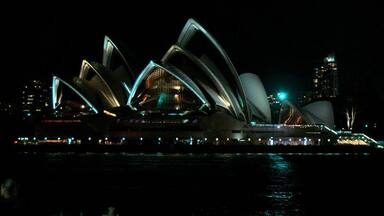Berlin Modernism Housing Estates
Berlin Modernism Housing Estates
Berlin Modernism Housing Estates. The property consists of six housing estates that testify to innovative housing policies from 1910 to 1933, especially during the Weimar Republic, when the city of Berlin was particularly progressive socially, politically and culturally. The property is an outstanding example of the building reform movement that contributed to improving housing and living conditions for people with low incomes through novel approaches to town planning, architecture and garden design. The estates also provide exceptional examples of new urban and architectural typologies, featuring fresh design solutions, as well as technical and aesthetic innovations. Bruno Taut, Martin Wagner and Walter Gropius were among the leading architects of these projects which exercised considerable influence on the development of housing around the world.
Description is available under license CC-BY-SA IGO 3.0
Cités du modernisme de Berlin
Les Cités du style moderne de Berlin, en Allemagne, comprennent six ensembles de logements qui témoignent de la politique de l’habitat innovante de 1910 à 1933, spécialement durant la République de Weimar, lorsque la ville de Berlin était à l’avant-garde sur le plan social, politique et culturel. Ces cités constituent un exemple exceptionnel de l’évolution des logements sociaux qui a contribué à améliorer l’habitat et les conditions de vie des personnes à faibles revenus, grâce à des approches novatrices en matière d’urbanisme, d’architecture et de conception des jardins. Le site offre des exemples remarquables de nouveaux types urbains et architecturaux avec des solutions inédites en matière de design et des innovations techniques et esthétiques. Bruno Taut, Martin Wagner et Walter Gropius ont été parmi les principaux architectes de ces projets qui ont exercé une influence considérable sur le développement de l’habitat partout dans le monde.
Description is available under license CC-BY-SA IGO 3.0
الممتلكات السكنية ذات الأسلوب البرليني الحديث
يتألف الموقع من ستة ممتلكات سكنية تشهد على سياسات الإسكان المبتكرة بين عامي 1910 و1933، ولا سيما في ظل جمهورية فايمار، عندما كانت مدينة برلين متقدمة بشكل بارز على المستوى الاجتماعي والسياسي والثقافي. يوفر الموقع مثلاً رائعاً عن الحركة الإصلاحية في مجال البناء، والتي أسهمت في تحسين السكن والظروف المعيشية للفئات المنخفضة الدخل، من خلال نهوج غير مألوفة في تخطيط المدن والهندسة المعمارية وتصميم الحدائق. كما تعرض الممتلكات أمثلة استثنائية عن النماذج المعمارية والحضرية الجديدة، بما يشمل حلولاً تصميمية جديدة وابتكارات تقنية وجمالية. وكان برونو تاوت ومارتن فاغنر وولتر غروبيوس بين المهندسين المعماريين الرائدين لهذه المشاريع التي تركت أثراً بارزاً على تطور السكن عبر العالم.
source: UNESCO/CPE
Description is available under license CC-BY-SA IGO 3.0
Районы жилой застройки в стиле модерн Берлина
Это шесть районов жилой застройки, свидетельствующих об инновационной жилищной политике, проводимой 1910-1933 годах, особенно во времена Веймарской республики, когда Берлин переживал бурные политические, социальные и культурные преобразования. Эти здания - выдающийся пример реформ в области жилищной застройки, которые благодаря новым подходам в градостроительстве, архитектурном и ландшафтном дизайне, содействовали улучшению жилищных и бытовых условий людей с низкими доходами. Это также уникальный пример новых городских и архитектурных стандартов, инновационных дизайнерских, технических и эстетических решений. Главные архитекторы этих проектов Бруно Таут, Мартин Вагнер и Вальтер Гропиус внесли важный вклад в развитие жилищного строительства в разных странах мира.
source: UNESCO/CPE
Description is available under license CC-BY-SA IGO 3.0
Bloques de viviendas modernistas de Berlín
Este sitio comprende seis inmuebles de viviendas que atestiguan la política innovadora en materia de hábitat urbano aplicada en Berlín entre 1910 y 1933, sobre todo en tiempos de la República de Weimar, cuando la capital alemana desempeñaba un papel de vanguardia en el plano social, político y cultural. Estos inmuebles constituyen un ejemplo notable del movimiento en pro de la construcción de nuevas viviendas sociales, que contribuyó a mejorar el alojamiento y las condiciones de vida de personas de ingresos modestos gracias a la adopción de planteamientos innovadores en la planificación urbanística, la arquitectura y el diseño de jardines. Estas viviendas son ejemplos excepcionales de realizaciones urbanísticas y arquitectónicas de nuevo tipo, caracterizadas por sus soluciones inéditas en materia de diseño y sus innovaciones técnicas y estéticas. Bruno Taut, Martin Wagner y Walter Gropius figuran entre los arquitectos principales de estas edificaciones, que tuvieron una importante repercusión en la construcción de viviendas sociales en el mundo entero.
source: UNESCO/CPE
Description is available under license CC-BY-SA IGO 3.0
ベルリンの近代集合住宅群
世界遺産に登録されたのは、ベルリンに点在する六つの集合住宅で、ワイマール共和国時代の1910~1933年に建設されたもの。いずれも、低所得者層の住宅と生活環境を改善することを目的とした、革新的な住宅供給政策の賜物である。政策の中心を担ったのは、ブルーノ・タウト、マルティン・ヴァグナー、ヴァルター・グロピウスら一流の建築家。新たな都市計画、建築手法、庭園設計を通じて建てられた住宅には、浴室、調理場、柱廊、日当たりのよいバルコニーが備えられた。当時のベルリンがいかに社会的、政治的、文化的に斬新だったかを示す住宅であり、世界中の公共住宅の発展に多大な影響を及ぼした。source: NFUAJ
Modernistische woonwijken in Berlijn
Dit gebied bestaat uit zes woonwijken die getuigen van innovatief huisvestingsbeleid van 1910 tot 1933 – met name tijdens de Weimar Republiek – toen de stad Berlijn sociaal, politiek en cultureel bijzonder progressief was. De woonwijken zijn een goed voorbeeld van de hervormingsbeweging in de bouwwereld die heeft bijgedragen aan de verbetering van woon- en leefomstandigheden van mensen met een laag inkomen, door middel van nieuwe benaderingen van de stadsplanning, architectuur en tuinontwerp. De wijken laten een nieuwe wijze van stadvorming en architectuur zien, uitgewerkt in frisse ontwerpen en technische en esthetische vernieuwingen. De projecten hebben wereldwijd de woningbouw beïnvloed.
Source: unesco.nl
Outstanding Universal Value
The set of housing estates in the Berlin Modern Style provides outstanding testimony to the implementation of housing policies during the period 1910 – 1933 and especially during the Weimar Republic, when the city of Berlin was characterized by its political, social, cultural and technical progressiveness. The housing estates reflect, with the highest degree of quality, the combination of urbanism, architecture, garden design and aesthetic research typical of early 20th century modernism, as well as the application of new hygienic and social standards. Some of the most prominent leading architects of German modernism were involved in the design and construction of the properties; they developed innovative urban, building and flat typologies, technical solutions and aesthetic achievements.
Criterion (ii): The six Berlin housing estates provide an outstanding expression of a broad housing reform movement that made a decisive contribution to improving housing and living conditions in Berlin. Their quality of urban, architectural and garden design, as well as the housing standards developed during the period, served as guidelines for social housing constructed since then, both in and outside Germany.
Criterion (iv): The six Berlin housing estates are exceptional examples of new urban and architectural typologies, designed in the search for improved social living conditions. Fresh design solutions and technical and aesthetic innovations were incorporated by the leading modern architects who participated in their design and construction.
The six properties were selected out of the ensemble of housing estates of the period existing in the city, on the basis of their historical, architectural, artistic and social significance and the fact that, due to their location, they suffered little damage during World War II. Even though minor reconstruction and interior changes were carried out in the post war period, restoration works within the framework of the protection law of 1975 and their current state of conservation achieve a high standard of integrity and authenticity.
Adequate protection is ensured by the legislation in place, especially by the Berlin Law on the Preservation of Historic Places and Monuments (1995). The properties, buildings and open spaces, are in a good state of conservation. The management system, including policies, structures and plans, proves to be adequate and includes all concerned stakeholders.


